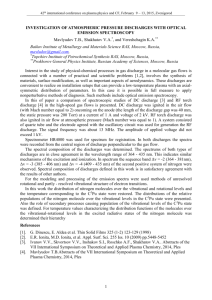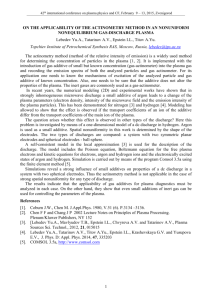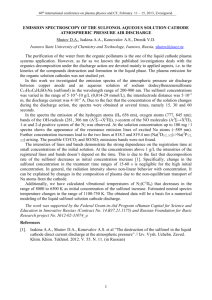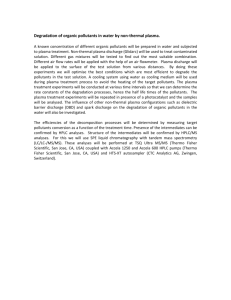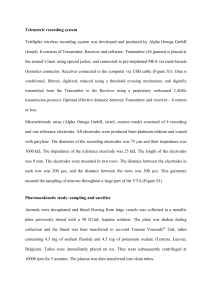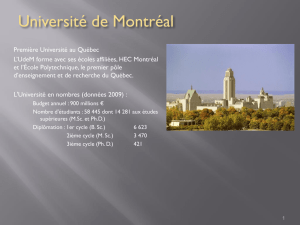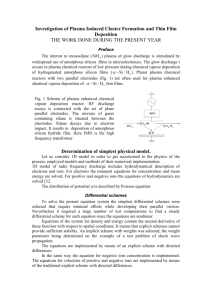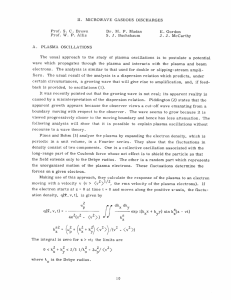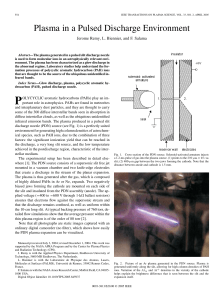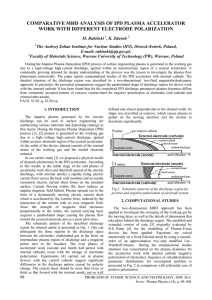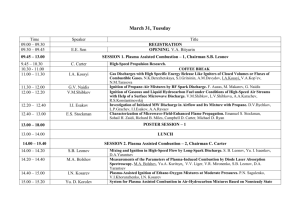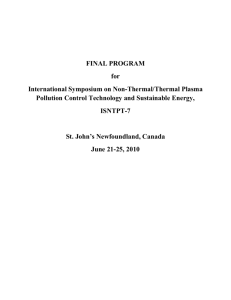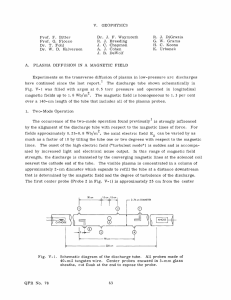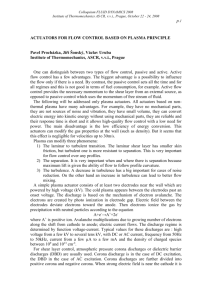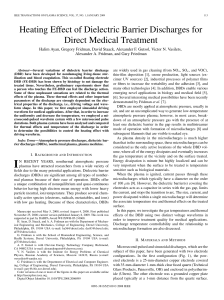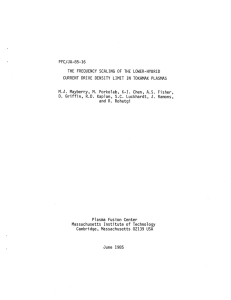some plasma chemical applications of discharges with liquid non
advertisement
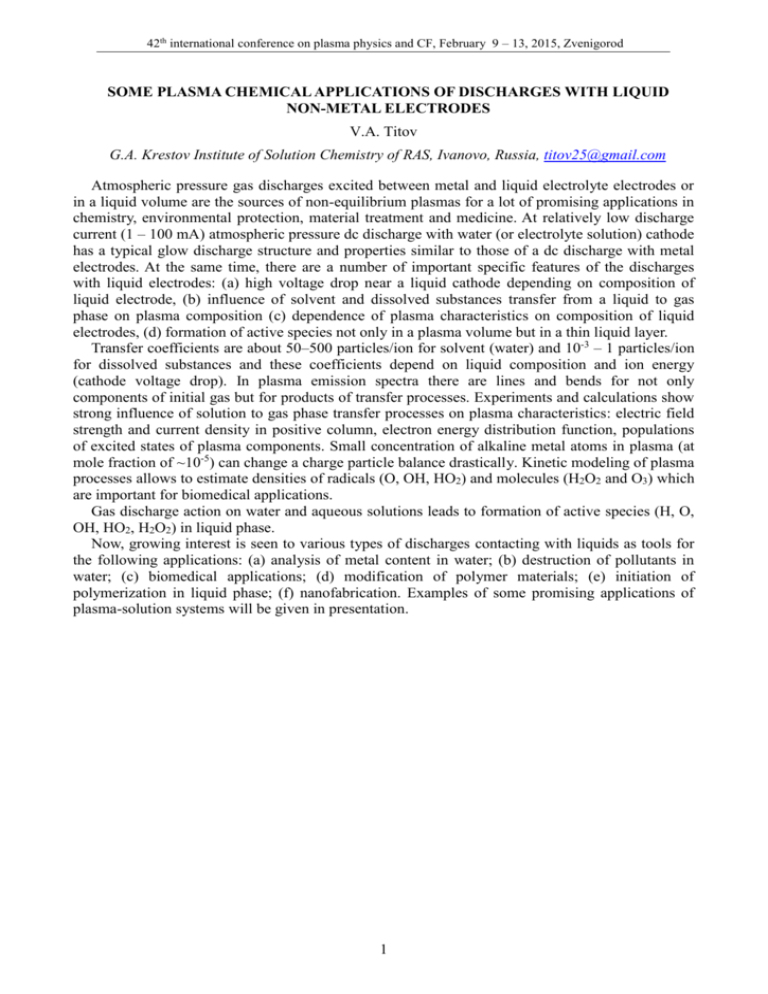
42th international conference on plasma physics and CF, February 9 – 13, 2015, Zvenigorod SOME PLASMA CHEMICAL APPLICATIONS OF DISCHARGES WITH LIQUID NON-METAL ELECTRODES V.A. Titov G.A. Krestov Institute of Solution Chemistry of RAS, Ivanovo, Russia, titov25@gmail.com Atmospheric pressure gas discharges excited between metal and liquid electrolyte electrodes or in a liquid volume are the sources of non-equilibrium plasmas for a lot of promising applications in chemistry, environmental protection, material treatment and medicine. At relatively low discharge current (1 – 100 mA) atmospheric pressure dc discharge with water (or electrolyte solution) cathode has a typical glow discharge structure and properties similar to those of a dc discharge with metal electrodes. At the same time, there are a number of important specific features of the discharges with liquid electrodes: (a) high voltage drop near a liquid cathode depending on composition of liquid electrode, (b) influence of solvent and dissolved substances transfer from a liquid to gas phase on plasma composition (c) dependence of plasma characteristics on composition of liquid electrodes, (d) formation of active species not only in a plasma volume but in a thin liquid layer. Transfer coefficients are about 50–500 particles/ion for solvent (water) and 10-3 – 1 particles/ion for dissolved substances and these coefficients depend on liquid composition and ion energy (cathode voltage drop). In plasma emission spectra there are lines and bends for not only components of initial gas but for products of transfer processes. Experiments and calculations show strong influence of solution to gas phase transfer processes on plasma characteristics: electric field strength and current density in positive column, electron energy distribution function, populations of excited states of plasma components. Small concentration of alkaline metal atoms in plasma (at mole fraction of ~10-5) can change a charge particle balance drastically. Kinetic modeling of plasma processes allows to estimate densities of radicals (О, ОН, НО2) and molecules (Н2О2 and О3) which are important for biomedical applications. Gas discharge action on water and aqueous solutions leads to formation of active species (Н, О, ОН, НО2, Н2О2) in liquid phase. Now, growing interest is seen to various types of discharges contacting with liquids as tools for the following applications: (a) analysis of metal content in water; (b) destruction of pollutants in water; (c) biomedical applications; (d) modification of polymer materials; (e) initiation of polymerization in liquid phase; (f) nanofabrication. Examples of some promising applications of plasma-solution systems will be given in presentation. 1


